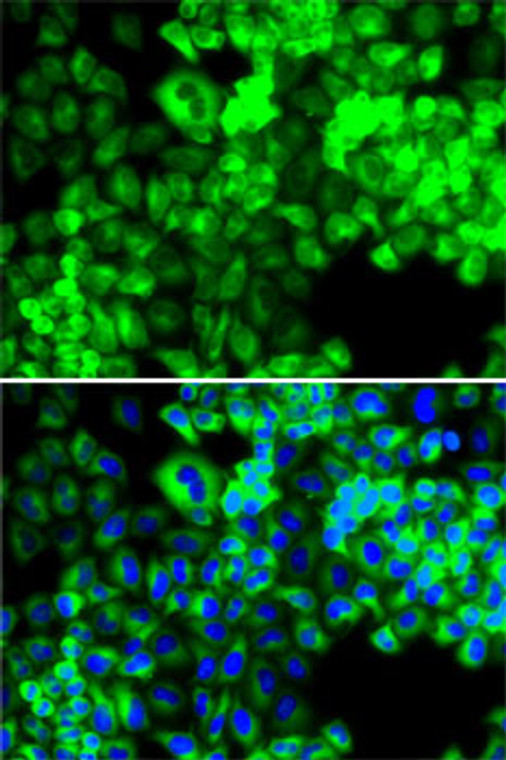| Host: |
Rabbit |
| Applications: |
WB/IHC/IF |
| Reactivity: |
Human/Mouse/Rat |
| Note: |
STRICTLY FOR FURTHER SCIENTIFIC RESEARCH USE ONLY (RUO). MUST NOT TO BE USED IN DIAGNOSTIC OR THERAPEUTIC APPLICATIONS. |
| Short Description: |
Rabbit polyclonal antibody anti-SARS (1-300) is suitable for use in Western Blot, Immunohistochemistry and Immunofluorescence research applications. |
| Clonality: |
Polyclonal |
| Conjugation: |
Unconjugated |
| Isotype: |
IgG |
| Formulation: |
PBS with 0.02% Sodium Azide, 50% Glycerol, pH7.3. |
| Purification: |
Affinity purification |
| Dilution Range: |
WB 1:500-1:2000IHC-P 1:50-1:200IF/ICC 1:50-1:200 |
| Storage Instruction: |
Store at-20°C for up to 1 year from the date of receipt, and avoid repeat freeze-thaw cycles. |
| Gene Symbol: |
SARS1 |
| Gene ID: |
6301 |
| Uniprot ID: |
SYSC_HUMAN |
| Immunogen Region: |
1-300 |
| Immunogen: |
Recombinant fusion protein containing a sequence corresponding to amino acids 1-300 of human SARS (NP_006504.2). |
| Immunogen Sequence: |
MVLDLDLFRVDKGGDPALIR ETQEKRFKDPGLVDQLVKAD SEWRRCRFRADNLNKLKNLC SKTIGEKMKKKEPVGDDESV PENVLSFDDLTADALANLKV SQIKKVRLLIDEAILKCDAE RIKLEAERFENLREIGNLLH PSVPISNDEDVDNKVERIWG DCTVRKKYSHVDLVVMVDGF EGEKGAVVAGSRGYFLKGVL VFLEQALIQYALRTLGSRGY IPIYTPFFMRKEVMQEVAQ |
| Tissue Specificity | Brain. |
| Function | Catalyzes the attachment of serine to tRNA(Ser) in a two-step reaction: serine is first activated by ATP to form Ser-AMP and then transferred to the acceptor end of tRNA(Ser). Is probably also able to aminoacylate tRNA(Sec) with serine, to form the misacylated tRNA L-seryl-tRNA(Sec), which will be further converted into selenocysteinyl-tRNA(Sec). In the nucleus, binds to the VEGFA core promoter and prevents MYC binding and transcriptional activation by MYC. Recruits SIRT2 to the VEGFA promoter, promoting deacetylation of histone H4 at 'Lys-16' (H4K16). Thereby, inhibits the production of VEGFA and sprouting angiogenesis mediated by VEGFA. |
| Protein Name | Serine--Trna Ligase - CytoplasmicSeryl-Trna SynthetaseSerrsSeryl-Trna(Ser/Sec Synthetase |
| Database Links | Reactome: R-HSA-2408557Reactome: R-HSA-379716 |
| Cellular Localisation | CytoplasmNucleusPredominantly CytoplasmicBut A Minor Proportion Is Also Found In The Nucleus |
| Alternative Antibody Names | Anti-Serine--Trna Ligase - Cytoplasmic antibodyAnti-Seryl-Trna Synthetase antibodyAnti-Serrs antibodyAnti-Seryl-Trna(Ser/Sec Synthetase antibodyAnti-SARS1 antibodyAnti-SARS antibodyAnti-SERS antibody |
Information sourced from Uniprot.org
12 months for antibodies. 6 months for ELISA Kits. Please see website T&Cs for further guidance








